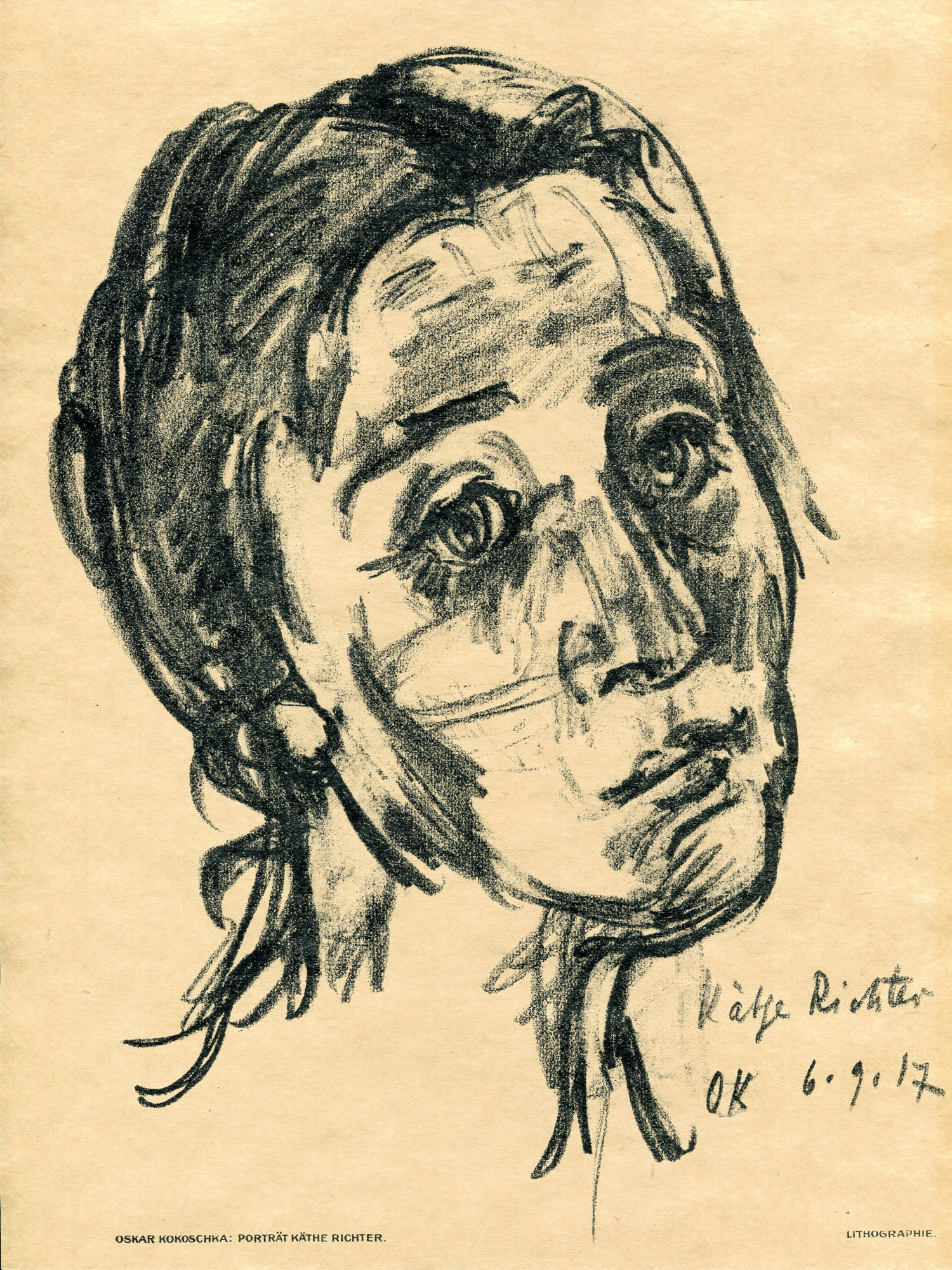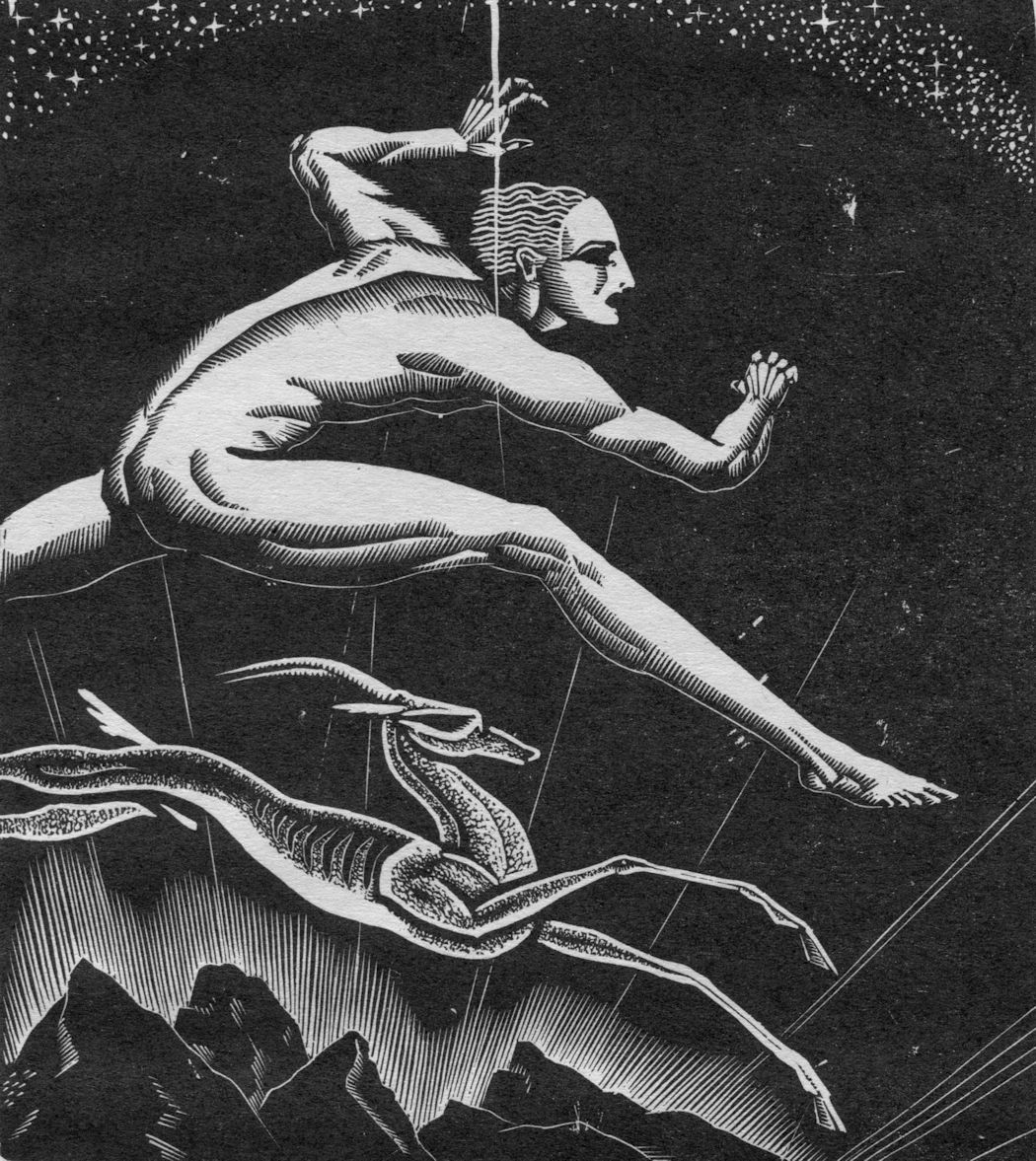Oskar Kokoschka (1886 - 1980)
Painter, printmaker and writer Oskar Kokoschka, a leading Expressionist artist, was born in Pöchlarn, Austria. He attended school in Vienna and at age 18 won a scholarship to the School of Arts and Crafts, where he le3arned drawing and bookbinding, and where he also taught. In 1907, Kokoschka become a member of the Vienna Crafts Studio, which supplied him with decorative arts commissions over the ensuing two years, which reflected his primary interest in the human figure. While at the Vienna Crafts Studio, Kokoschka also learned how to paint in oils.
The prominent Viennese architect Adolf Loos, to whom Kokoschka was introduced in 1908, was instrumental in launching the younger man’s career by introdcing him to like-minded fellow artists and by helping him secure commissions for a series of portraits in which the rising artist used intense color to depict the emotional aspects of his subjects, a marked departure from the prevailing impressionistic style.
Following a year-long stay in Berlin, Kokoschka returned to Vienna in 1911. His paintings and drawings were shown at Der Sturm gallery alongside works by Klee, Kandinsky. Upon the outbreak of the first World War, he enlisted in the Austrian Army. In 1915 his service ended when he was severely wounded. From 1919 – 1923, Kokoschka was a professor of fine arts at the Dresden Academy. During that period he traveled widely and produced a series of dramatic landscapes. In 1931 Kokoschka once again returned to Vienna, but in 1934 he moved to Prague, where he met and married Olda Palkovska. There. he was commissioned to do a portrait of Tomáš Masaryk, the philosopher and then-President of Czechoslovakia.
In 1937, Kokoschka expressed rage and indignation when his works were banned from public display in Germany, swept up in the National Socialist campaign against “degenerate art.” Following the annexation of Austria and the subsequent Munich agreement, Kokoschka fled to London with his wife. There, he produced a number of canvases dealing with antiwar themes and highlighting the range of human suffering wrought by the war. Following the war, Kokoschka’s work was widely shown at a series of exhibitions throughout Europe. He moved permanently to Switzerland and established an international Summer Academy for the Visual Arts in Salzburg. He died at Montreux, Switzerland.

Porträt Käthe Richter
Lithograph on tan wove paper, edition of approximately 1100. Published in October, 1917 as the frontispiece of Das Kunstblatt, volume 1, number 10. Image size 7¾" x 10"; sheet size 8-7/16" x 11¼". Titled, signed "OK", and dated on the stone; remnants of mounting tape top verso. A fine impression in overall fine condition.
A wonderful Expressionist portrait of the actess Käthe Richter. Founder and editor Paul Westheim published Das Kunstblatt monthly from 1917 to its final issue in March, 1933. The magazine was a bold, broad-gauge survey of avant-garde work by leading European artists, playwrights and writers of the era, as well as critical surveys of Asian, African, and Indian art. Condemned by the National Socialist regime, the magazine was suppressed and Paul Westheim fled Germany later that year.
SOLD
